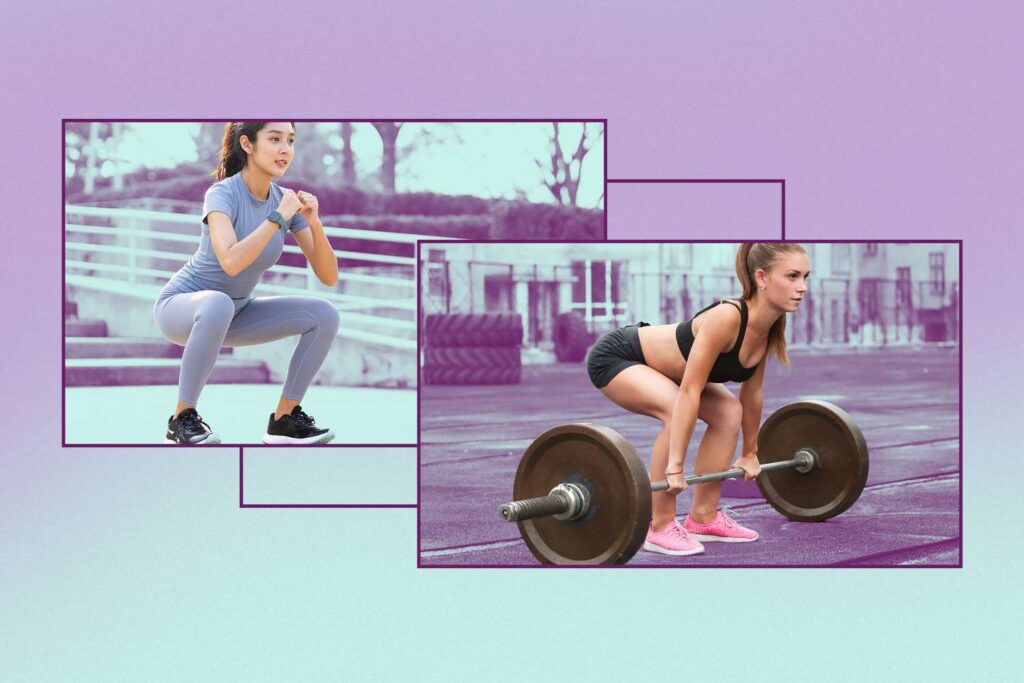Are you ready to dive into the ultimate showdown of strength training exercises? Squats and deadlifts go head-to-head in a battle for supremacy, each offering unique benefits and targeting different muscle groups. Whether you’re a fitness enthusiast looking to amp up your routine or a weightlifting newbie wondering where to start, this expert analysis will help you navigate the world of squats vs. deadlifts. Let’s break down these powerhouse moves and uncover which one reigns supreme in your quest for optimal strength and fitness!
Benefits of Squats and Deadlifts
Squats and deadlifts are powerhouse exercises that offer a myriad of benefits for your strength training routine.
Squats are renowned for targeting the lower body muscles such as the quadriceps, hamstrings, and glutes. They help improve overall lower body strength and stability.
On the other hand, deadlifts primarily focus on the posterior chain muscles including the back, glutes, hamstrings, and core. This exercise is excellent for building functional strength and improving posture.
Both squats and deadlifts engage multiple muscle groups simultaneously which can lead to increased calorie burn during and after your workout. Additionally, these compound movements can enhance your balance, coordination, and flexibility over time.
Incorporating squats and deadlifts into your fitness regimen can also boost bone density, joint health, and overall athletic performance. Whether you’re looking to increase muscle mass or improve functional strength in daily activities – these exercises have got you covered!
Differences Between the Exercises
When it comes to comparing squats and deadlifts, there are significant differences that cater to various fitness goals.
Squats primarily target the quadriceps, hamstrings, and glutes while also engaging the core for stability. On the other hand, deadlifts focus more on the posterior chain muscles like the lower back, glutes, and hamstrings.
In terms of movement patterns, squats involve bending at the knees and hips simultaneously while maintaining an upright torso position. Deadlifts require hinging at the hips with a straight back to lift the weight from the ground.
Both exercises have their unique benefits in building strength and muscle mass. Squats excel in targeting leg muscles for explosive power, whereas deadlifts emphasize overall body strength by working multiple muscle groups simultaneously.
Choosing between squats and deadlifts depends on your specific fitness objectives and preferences. Experimenting with both exercises can help you determine which one aligns best with your goals.
Muscles Targeted by Squats vs. Deadlifts
Squats and deadlifts are two powerhouse exercises that target various muscle groups in the body. When it comes to squats, you’re primarily working your quads, hamstrings, glutes, and calves. These muscles all come into play as you lower yourself down into a squat position and push back up.
On the other hand, deadlifts focus on engaging your hamstrings, glutes, lower back, and traps. The movement of bending at your hips and knees to lift the weight off the ground activates these key muscle groups intensely.
Both exercises also engage your core for stability and balance throughout the movements. Squats emphasize more on quad development while deadlifts place greater emphasis on posterior chain strength.
Incorporating both squats and deadlifts into your workout routine ensures comprehensive muscle engagement for overall strength development. Whether you prefer one over the other or opt for a combination of both ultimately depends on your fitness goals and individual preferences.
Proper Form and Technique for Both Exercises
When it comes to squats and deadlifts, proper form and technique are paramount for maximizing gains while minimizing the risk of injury. For squats, start by setting your feet shoulder-width apart, keeping your back straight, chest up, and core engaged throughout the movement. As you lower yourself down, ensure your knees track over your toes but do not go past them.
For deadlifts, begin with a hip-width stance and grip the barbell just outside of your legs. Keep your back flat as you hinge at the hips to lower down while maintaining a neutral spine. Engage your glutes and hamstrings to drive through the heels on the way up.
Remember that both exercises require focus on breathing – inhale during the eccentric phase (lowering) and exhale during the concentric phase (lifting). Always prioritize being overweight to prevent any potential injuries in these compound movements.
Injury Prevention Tips
When it comes to injury prevention during strength training exercises like squats and deadlifts, proper form is key.
Always start with a thorough warm-up to prepare your muscles and joints for the workout ahead. Dynamic stretches can also help improve flexibility and reduce the risk of strains or tears.
Listen to your body – if you feel any sharp pain or discomfort, stop immediately. Pushing through pain can lead to serious injuries that may set back your progress.
Ensure that you are using appropriate equipment such as weightlifting belts or knee sleeves to provide support and stability during heavy lifts.
Don’t neglect rest days in your training schedule. Rest is crucial for muscle recovery and overall injury prevention.
Consider incorporating mobility exercises into your routine to maintain joint health and prevent stiffness or imbalances that could increase the risk of injury over time.
Choosing the Best Exercise for Your Goals
When it comes to choosing between squats and deadlifts for your strength training goals, consider what you aim to achieve. Squats are excellent for overall lower body development, targeting the quads, hamstrings, and glutes. On the other hand, deadlifts primarily work on the posterior chain muscles like the back, glutes, and hamstrings.
If you’re looking to build explosive power and improve your squat performance in sports like weightlifting or sprinting, incorporating squats into your routine can be beneficial. Conversely, if you want to strengthen your back muscles and enhance your grip strength for activities like powerlifting or strongman competitions, focusing on deadlifts might be more suitable.
Selecting the best exercise for your goals depends on understanding how each movement aligns with what you want to achieve in terms of strength gains and muscle development. Experiment with both exercises to see which one resonates better with your body and fitness objectives.
Expert Opinions on Optimal Strength Training Exercise
When it comes to optimal strength training exercises, experts have varying opinions on whether squats or deadlifts reign supreme. Some fitness gurus swear by the effectiveness of squats for building lower body strength and muscle mass. On the other hand, many trainers advocate for deadlifts as a compound movement that engages multiple muscle groups simultaneously.
While some experts believe that squats are essential for developing overall leg strength and power, others argue that deadlifts are unmatched in targeting the posterior chain, including the hamstrings, glutes, and lower back. It ultimately boils down to individual goals and preferences when choosing between these two powerhouse exercises.
Regardless of which exercise you lean towards, incorporating both squats and deadlifts into your workout routine can provide a well-rounded approach to strength training. Seek guidance from certified trainers or fitness professionals to ensure proper form and technique while performing these challenging movements.
Incorporating Squats and Deadlifts into Your Workout Routine
Looking to take your strength training to the next level? Incorporating squats and deadlifts into your workout routine can be a game-changer.
Start by incorporating these compound exercises 2-3 times a week, ensuring you give your muscles enough time to recover between sessions.
When adding squats and deadlifts, remember that proper form is key to maximizing their benefits and reducing the risk of injury. Focus on technique over weight – quality over quantity.
Consider alternating between heavy and light days for these exercises, allowing for variation in intensity while still challenging your muscles effectively.
Don’t forget about accessory movements like lunges or Romanian deadlifts to complement the main lifts and target specific muscle groups from different angles.
Listen to your body and adjust as needed – everyone’s fitness journey is unique!
Conclusion
Squats and deadlifts are both essential exercises in a strength training routine. Each exercise offers unique benefits and targets different muscle groups, making them valuable additions to any workout program. By incorporating proper form, technique, and injury prevention tips, you can maximize the effectiveness of these exercises while minimizing the risk of injury.
The best exercise for you will depend on your fitness goals and individual preferences. Whether you choose squats or deadlifts or decide to include both in your routine, consistency and dedication are key to achieving optimal results in your strength training journey. Remember to listen to your body, seek guidance from fitness professionals if needed, and enjoy the process of challenging yourself to become stronger and healthier each day.
To know more, go to www.qawire.com



